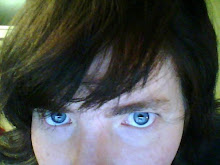In the spirit of the international women's day that just passed I wanted to tell you about Jerrie Cobb.
"Who?", you ask.
Jerrie Cobb.
Her name could have been a household name and rolled off everyone's tounge as easily as Neil Armstrong or John Glenn.
She could have been - and should have been - the first woman in space.
I learned about Jerrie by accident. I've always considered myself a "space nerd", and by that I mean that I can not only tell you that Neil Armstrong was the fist man on the moon but that the other two members of the Apollo 11 mission were Edwin "Buzz" Aldrin and Michael Collins. Or that Alan Shepard not only was the first American in space and the fifth man on the moon but also that he was the first one to hit a golf ball on the moon. Or that the Apollo-missions would not have been possible at all had it not been for the Mercury and Gemini missions.
One day I ended up on NASA's website where you can test all your knowledge about everything NASA. "Easy as pie", I thought and took a quiz. I think it was question number three that was life-changing.
"Who was the first woman in space?"
I was flabbergasted. How could I never have considered women in space? Why didn't her name roll off my tongue as easily as Shepard, Glenn, Grissom and Armstrong? I then became fascinated with my own lack of knowledge about women in space and started reading and researching the subject. I soon found Jerrie. I read the two books she wrote in the 60's and have since then met her in person.
In a time when women were supposed to be housewives, teachers or nurses Jerrie became a pilot at the age of 16. By 18 she was a flight instructor and at 21 she delivered planes all over South America for the Air Force. She worked as a test pilot and few higher, further and faster than anyone else. During the 50's she broke three world records - in speed, altitude and distance. By 1960 she had logged over 10,000 flight hours - compared to John Glenn's 5,000.
Jerrie met Dr. Lovelace and General Flickinger who trained and tested the first American astronauts - The Mercury astronauts. Lovelace and Flickinger were fascinated by Jerrie and offered her to take the same tests and undergo the same training as the male astronauts. She passed with flying colors. She helped pick out more women to test and after another 12 passed the tests (they came to be known as Mercury 13) she had high hopes for an official training program for women astronauts.
After a conference in Stockholm, Sweden in August of 1960 where Lovelace introduced the results of Jerrie's training, everyone thought that she would be the first woman in space. She was in the limelight for quite some time but she was never allowed to become an astronaut. It went so far as a Congressional hearing to see if NASA was discriminating women. This hearing took place two years before the Civil Rights movement which made discrimination illegal. Despite that the hearing seemed to go in favor of the women, nothing happened.
June 16, 1963 Valentina Tereshkova became the first woman in space. It would take more than 20 years before the first American woman got into space - Sally Ride, June 18, 1983. Eileen Collins became the first female shuttle pilot and the first female Commander of a mission in 1999. She realized the importance of Jerrie's struggle and invited her to the launch.
Jerrie still works as a pilot. She flies a plane every day - at the age of 77 - but she still dreams of becoming an astronaut. "I would give my life to fly in space", she says. "I would have then. I would now. This is something I would give my life for. It wouldn't be contingent on my coming back. I would go if it was just a one-way trip. I would go if I knew I wasn't coming back."
Prenumerera på:
Kommentarer till inlägget (Atom)




Inga kommentarer:
Skicka en kommentar